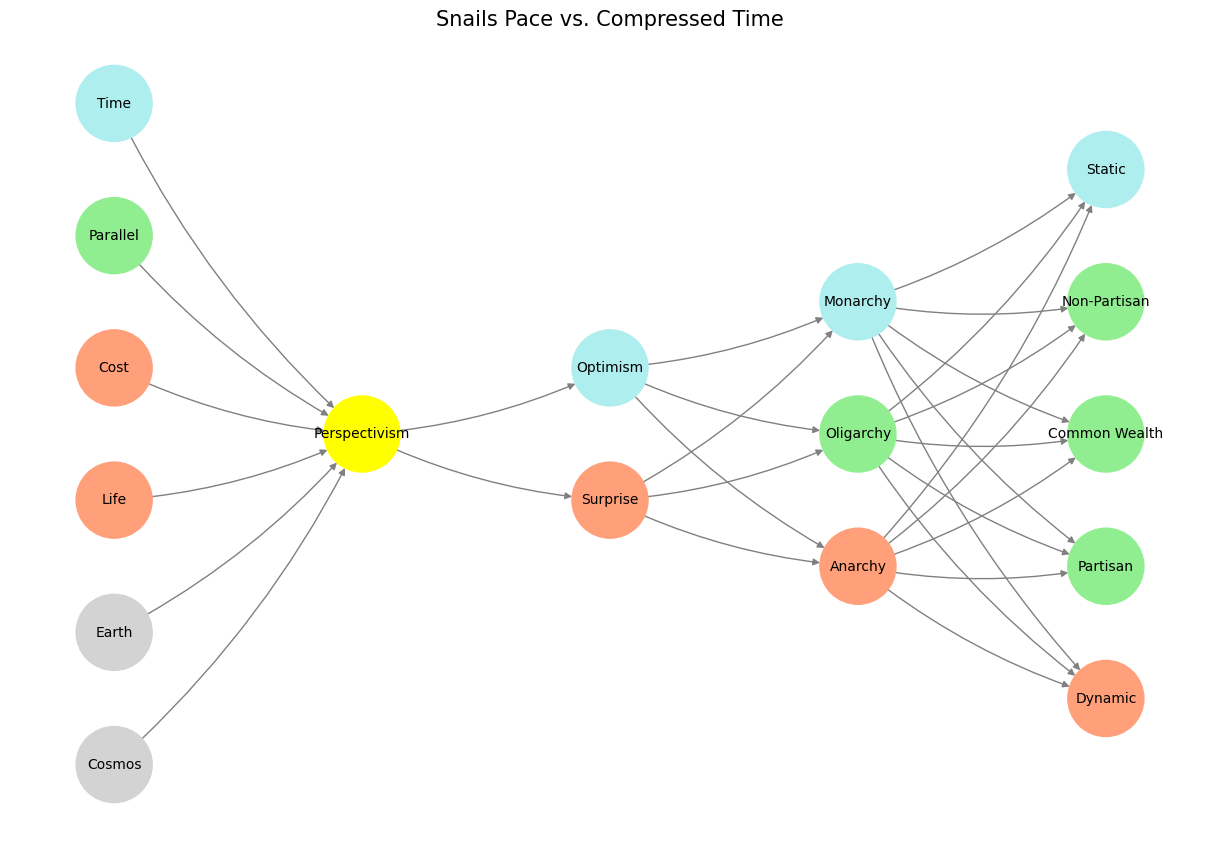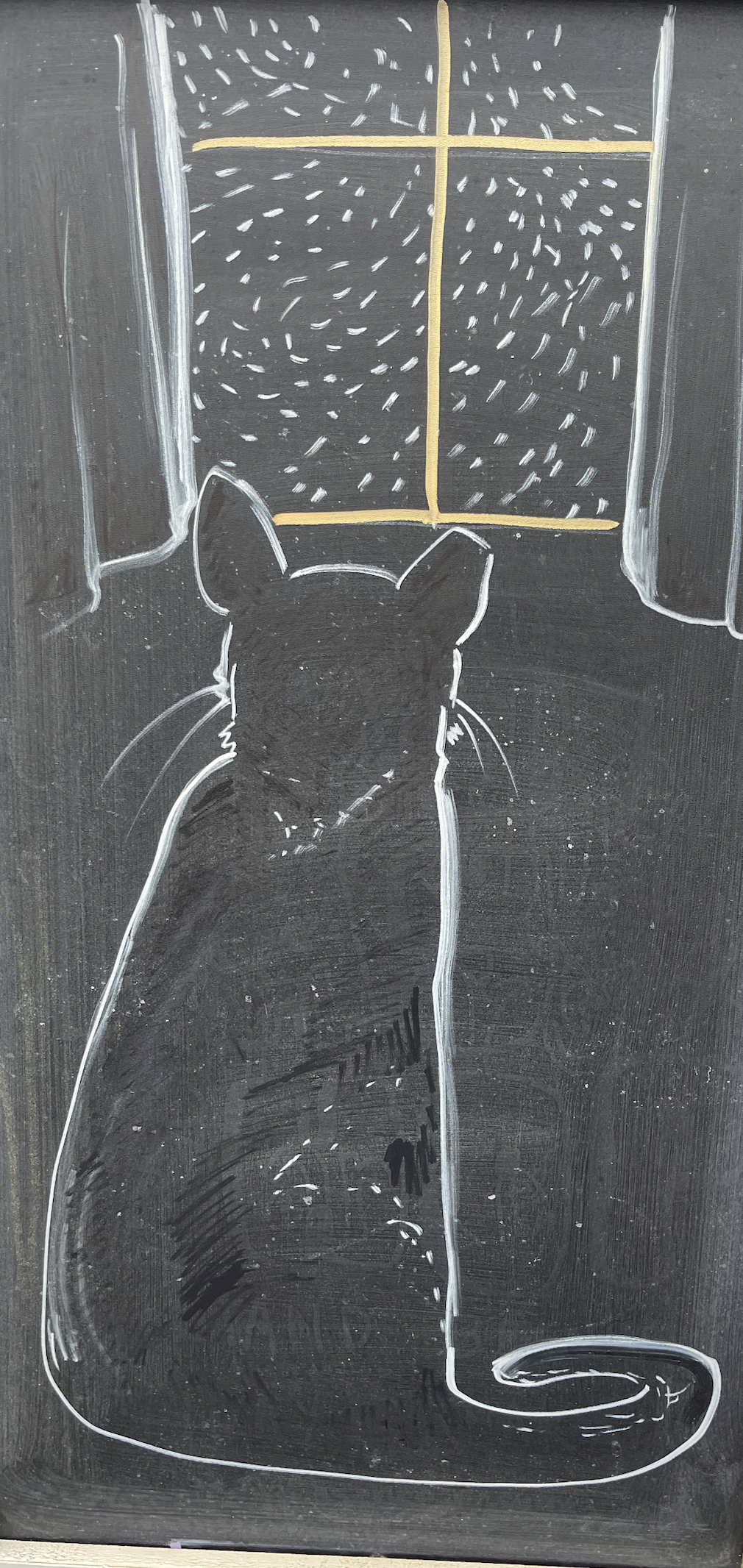Cunning Strategy#
The fourth layer, the combinatorial space of the game, represents a dynamic trial-and-error system where instinct is tempered, decisions are made, and the outcomes shape the trajectory of life. It is here, at G3, the presynaptic autonomic ganglia, that the switches between the sympathetic and parasympathetic systems mediate the balance between instinctive responses and the deeper rhythms of existence. This layer is not merely reactive; it is iterative, transactional, and emergent, embodying the complexity of human behavior as it navigates between survival and transcendence.
The Sympathetic and Parasympathetic Divide#
At its core, the fourth layer is governed by the tension between two fundamental systems: the sympathetic and parasympathetic. The sympathetic system represents the primal instincts of fight or flight—the urgent, reactive responses necessary for survival in the face of immediate threats. It is the system of action, energy, and confrontation, driving the organism toward self-preservation.
In contrast, the parasympathetic system embodies the rhythms of feed, breed, and sleep—the restorative, nurturing processes that sustain life beyond the immediate. It is the system of restraint, recovery, and continuity, ensuring that the organism can thrive in moments of safety and abundance. Together, these systems form the dual pillars of existence, oscillating between the extremes of action and restoration.

Fig. 9 Competition (Generativity) & Feedback (Exertion). The massive combinatorial search space and optimized emergent behavioral from “games” among the gods, animals, and machines are the way evolution has worked from the beginning of time. Peterson believes reinforcement learning through human feedback (RLHF- a post-training twitch) removes this evolutionary imperative.#
Trial and Error in the Combinatorial Space#
The fourth layer operates as a vast combinatorial space, where every action represents a choice between the sympathetic and parasympathetic drives. Life unfolds as a series of iterative decisions: to act or to refrain, to fight or to nurture, to preserve or to create. Each decision is a gamble, an experiment in balancing immediate needs against long-term goals.
This trial-and-error process is not random but guided by feedback loops. The outcomes of actions—success, failure, survival, growth—inform future decisions, gradually refining the system’s responses. Over time, patterns emerge, and the combinatorial space is shaped by the interplay of instinct and adaptation.
Yet every decision, no matter how small, carries weight. To suppress an instinct in favor of feeding, breeding, or sleeping is to choose life in one form. To respond instinctively through fighting or fleeing is to affirm life in another. The iterative nature of this space is both its beauty and its burden, as every action contributes to the emergent equilibria of existence.
Emergent Equilibria: Cooperative, Adversarial, and Transactional#
From this iterative process emerge the three equilibria that define human interaction and societal structures:
Cooperative Equilibria: These arise when individuals prioritize mutual benefit, aligning their actions to create shared value. Cooperation emerges from restraint, the willingness to temper instinct for the sake of collective well-being. It is rooted in parasympathetic drives, as feeding, breeding, and nurturing form the foundation of communal life.
Adversarial Equilibria: These reflect the dynamics of conflict, competition, and survival. Adversarial interactions are driven by sympathetic instincts, where fighting or fleeing becomes necessary to assert dominance, protect resources, or secure existence. These equilibria are high-risk but also high-reward, as they push the boundaries of what is possible.
Iterative-Transactional Equilibria: Situated between cooperation and conflict, the transactional space represents the iterative give-and-take of negotiation and exchange. Transactions balance elements of both systems—sympathetic action and parasympathetic restraint—creating a middle ground where neither extreme dominates. Transactional equilibria are the engine of progress, fostering innovation through compromise and iteration.
The Iterative Nature of Life#
Life, in this framework, is an endless sequence of decisions within the combinatorial space of the fourth layer. Each decision—whether to fight, flee, feed, breed, or sleep—shapes the individual’s trajectory and, by extension, the trajectory of others. The feedback loops generated by these decisions refine not only individual behavior but also the broader systems in which they participate. Through iteration, humanity has created structures of cooperation, adversarial systems of competition, and transactional mechanisms that mediate between the two.
This iterative process is the essence of existence. It is a dance of instinct and restraint, trial and refinement, action and consequence. The choices made in the fourth layer ripple outward, influencing the emergent phenomena of the fifth layer—the grand illusion of optimization and meaning.
The Beauty of Tempered Instinct#
The fourth layer is extraordinary in its complexity. It is where the primal instincts of the yellow node are tempered through trial and error, transformed into strategies that navigate the delicate balance between survival and transcendence. The switches at G3, oscillating between the sympathetic and parasympathetic, are the engine of this transformation, enabling the system to adapt, grow, and evolve.
This layer captures the essence of life’s combinatorial richness: the interplay of fight and nurture, action and rest, competition and collaboration. It is a space of infinite possibility, where every decision contributes to the emergent patterns of existence. Through the iterative process of trial and error, the fourth layer reveals the profound beauty of life—not as a static system, but as a dynamic and evolving interplay of instincts, choices, and equilibria.
Show code cell source
import numpy as np
import matplotlib.pyplot as plt
import networkx as nx
# Define the neural network structure
def define_layers():
return {
'World': ['Cosmos', 'Earth', 'Life', 'Cost', 'Parallel', 'Time'], # Divine: Cosmos-Earth; Red Queen: Life-Cost; Machine: Parallel-Time
'Perception': ['Perspectivism'],
'Agency': ['Surprise', 'Optimism'],
'Generativity': ['Anarchy', 'Oligarchy', 'Monarchy'],
'Physicality': ['Dynamic', 'Partisan', 'Common Wealth', 'Non-Partisan', 'Static']
}
# Assign colors to nodes
def assign_colors(node, layer):
if node == 'Perspectivism':
return 'yellow'
if layer == 'World' and node in [ 'Time']:
return 'paleturquoise'
if layer == 'World' and node in [ 'Parallel']:
return 'lightgreen'
if layer == 'World' and node in [ 'Cosmos', 'Earth']:
return 'lightgray'
elif layer == 'Agency' and node == 'Optimism':
return 'paleturquoise'
elif layer == 'Generativity':
if node == 'Monarchy':
return 'paleturquoise'
elif node == 'Oligarchy':
return 'lightgreen'
elif node == 'Anarchy':
return 'lightsalmon'
elif layer == 'Physicality':
if node == 'Static':
return 'paleturquoise'
elif node in ['Non-Partisan', 'Common Wealth', 'Partisan']:
return 'lightgreen'
elif node == 'Dynamic':
return 'lightsalmon'
return 'lightsalmon' # Default color
# Calculate positions for nodes
def calculate_positions(layer, center_x, offset):
layer_size = len(layer)
start_y = -(layer_size - 1) / 2 # Center the layer vertically
return [(center_x + offset, start_y + i) for i in range(layer_size)]
# Create and visualize the neural network graph
def visualize_nn():
layers = define_layers()
G = nx.DiGraph()
pos = {}
node_colors = []
center_x = 0 # Align nodes horizontally
# Add nodes and assign positions
for i, (layer_name, nodes) in enumerate(layers.items()):
y_positions = calculate_positions(nodes, center_x, offset=-len(layers) + i + 1)
for node, position in zip(nodes, y_positions):
G.add_node(node, layer=layer_name)
pos[node] = position
node_colors.append(assign_colors(node, layer_name))
# Add edges (without weights)
for layer_pair in [
('World', 'Perception'), ('Perception', 'Agency'), ('Agency', 'Generativity'), ('Generativity', 'Physicality')
]:
source_layer, target_layer = layer_pair
for source in layers[source_layer]:
for target in layers[target_layer]:
G.add_edge(source, target)
# Draw the graph
plt.figure(figsize=(12, 8))
nx.draw(
G, pos, with_labels=True, node_color=node_colors, edge_color='gray',
node_size=3000, font_size=10, connectionstyle="arc3,rad=0.1"
)
plt.title("Snails Pace vs. Compressed Time", fontsize=15)
plt.show()
# Run the visualization
visualize_nn()


Fig. 10 Nostalgia & Romanticism. When monumental ends (victory), antiquarian means (war), and critical justification (bloodshed) were all compressed into one figure-head: hero#

